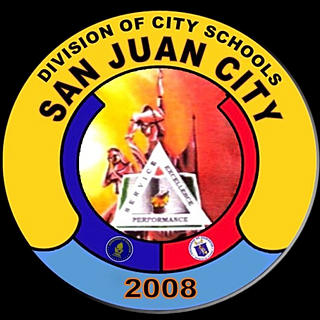Unveiling the Essence: A Comprehensive Guide to Assessment
- DepEd San Juan City
- Oct 6, 2023
- 3 min read

San Juan City Science High School (SJCSHS) conducted a Learning Action Cell on the Table of Specification and Technical Specifications for Periodic Examinations for School Year 2023-2024 on September 4, 2023, at the SJCSHS Conference Room. The LAC session was led by Mr. Christian A. De Guzman, Ms. Jerieca Aiko L. Pilvera, Ms. Fran Cathleen P. Castillo and Mr. Catalino A. Camayra.
The LAC session aimed to discuss how to assess learners and report this across curriculum contextualization, localization and indigenization through teachers. When it comes to periodic examinations, designing a well-structured and comprehensive assessment is the key in measuring students’ learning.

During the presentation, Mr. de Guzman covered the technical specifications for periodic examinations. He emphasized that technical specifications are the practical and logistical details that bring the examination to life. His discuss ion focused on the paper and pagination, font guidelines, questions and multiple-choice formatting, number of items and maximum pagination and the test material production process. Essentially, technical specifications provide a framework for the administration and grading of the assessment. It outlined the duration of the examination, allowing students a sufficient and equitable amount of time to complete the assessment. He added that technical specifications serve as the foundational plan for executing the exam.

Mr. Camayra gave the procedure for creating a table of specifications (TOS), highlighting essential steps. He stressed that the TOS commences with the identification of primary content domains. These domains were subdivided into precise subtopics or learning objectives. For each subtopic, a specific proportion or percentage of questions is designated, reflecting its importance and the level of emphasis during teaching. The total percentage of 100, ensuring an equitable and well-rounded assessment. Through the application of a TOS, teachers can guarantee the exam's comprehensiveness, encompassing the breadth and depth of the curriculum. This imparted clarity and organization to the exam, enabling both teachers and students to align their preparation with the expected assessment criteria.
Ms. Pilvera discussed the tips on test constructions. She stressed the need for clearly defined and measurable learning objectives. These objectives served as the foundation for crafting test questions and helped in aligning the assessment with the intended educational outcomes. She discussed the significance of incorporating diverse question formats such as multiple choice, short answer, essay, and practical problems. Different formats would enable a comprehensive evaluation of students' understanding, critical thinking, and application of knowledge. She emphasized the integration of Bloom's Taxonomy in test construction. Starting with lower-order thinking skills like recalling information and progressing to higher-order skills like analysis and evaluation ensures a balanced and challenging assessment. The importance of clarity and precision in test questions was underlined to prevent confusion or misinterpretation by students.

Ms. Castillo , on the other hand, stressed the significance of using the English language effectively on test construction. She discussed how using concise and well-structured sentences enhance the clarity of the message, making it easier for the listener or reader to understand the intended meaning. She highlighted the need to steer clear of unnecessary jargon and complex language that may confuse students. Using simple, direct language helps in conveying the intended message clearly, enabling students to respond accurately. She also added the importance of using appropriate vocabulary and subject-specific terminology in alignment with the students' proficiency level. According to her, this would help in measuring their comprehension of the subject matter without causing unnecessary language barriers by maintaining a consistent tone and style throughout the test. It would also ensure the uniformity and reduce as well the risk of confusion allowing students to focus on the content of the questions.

By the end of the LAC session, Dr. Jonas Feliciano C. Domingo led the participants in developing test questions that align with the content covered in Quarters 1 and 2, by providing his concluding insights. This included highlighting the significance of the TOS, encouraging all teacher participants to submit the TOS, and finally, reminding Subject Area Supervisors about the need to review the submitted TOS. This review process ensures that the assessment materials align with the approved curriculum and meet the necessary standards for a fair and accurate evaluation.
Following his inspiring words, Dr. Domingo handed each speaker with a Certificate of Appreciation. The certificates were a token of recognition, a symbolic gesture to honor the dedication and hard work put forth by the teachers in making the LAC session a resounding success.

Article Written by:
Christian A. De Guzman
Teacher II – San Juan City Science High School














Comments